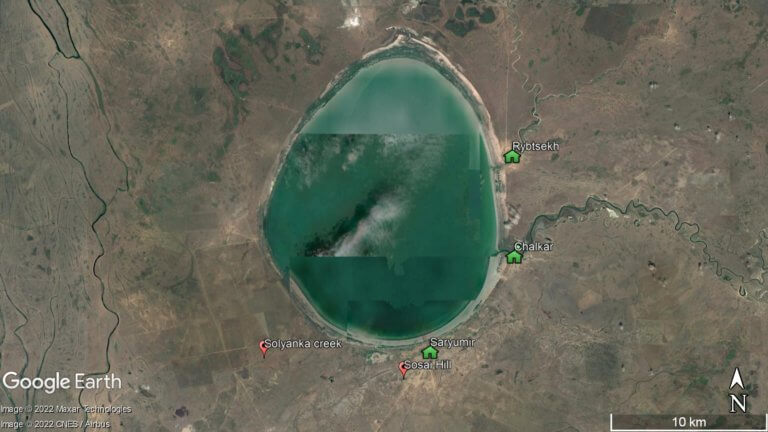
Aktau
Aktau serves as a perfect starting point for journeys into the Ustyurt and the broader Mangystau Region. Its strategic location on the Caspian Sea, coupled
Dead Kultuk, which is an uninhabited chunk of salt marsh almost half as big as the Buzachi Peninsula, begins at the northern end of Kaydak Bay. From the 17th–20th century, Dead Kultuk has had three different names: the Blue Sea, on Emanuel Bowen’s 1747 Map of Persia; Tsesarevich Bay during the Russian Empire; and Komsomolets Bay in Soviet times. The bay and its islands first appeared on maps produced by early-18th century Dutch navigator Karel van Weerden and Russian Fedor Ivanovich Soimonov.
At the entrance of the 70-kilometre-wide bay are the Durnev Islands. Many online reports imply there’s only one island off of the Buzachi’s northern coastline. However, if you whip open a 1970s Soviet map – or Google Earth – you’ll see there are at least five substantially sized islands, some of which are more than 6km wide and most of them are heavily covered in reeds.
According to Kaspika, a Caspian seals conservation agency, Durnev Island, the largest in the chain, had 30,000 seals in 2011. Though, in the following years, the number decreased rapidly as the Caspian’s falling sea level made it difficult for them to access the island. In September 2020, a scientific expedition by the Caspian Seals Research and Rehabilitation Centre found two rookeries on the Durnev Islands totalling 1,000 seals. However, just two years later, NASA’s Aqua satellite captured a natural-colour image of the northern Caspian Sea showing Dead Kultuk and the islands as dried-out. Unless the seals find a spot further west, it’s likely Durnev’s rookeries are no longer in existence.
Note: Karel van Weerden was also known as Carl van Verden.
Dead Kultuk (Ölı Qūltūq/Мёртвый Култук): 45.4089, 54.0717
Durnev Island (Durnev Araldary/Острова Дурнева): 45.4640, 52.6527
Kaydak Bay (Qaidaq Şyğanağy/Залив Кайдак): 44.9124, 53.5524
Karel van Weerden’s historical Caspian Sea map.
1981 map of the Caspian Sea by the USA’s Defense Mapping Agency (1971–1996), showing Kaydak Bay and the Durnev Islands in the bottom-right quarter.
1:500k Soviet map of Dead Kultuk and Kaydak Bay, pictured in the right half.
A photo story and video of Dead Kultuk by Russian vlogger Lyudmila Gvozdeva who undertakes off-road trips in her Nissan Micra!

Aktau serves as a perfect starting point for journeys into the Ustyurt and the broader Mangystau Region. Its strategic location on the Caspian Sea, coupled

Twenty kilometres north of Senek village is Shopan Ata, a circa 10th-century underground mosque that is one of Mangystau’s oldest religious sites. It was first

The brackish, egg-shaped Shalkar Lake – 65km south of Oral – measures 15km x 18km and receives water from two rivers on the east side:
Copyright © Planet Esoterica, 2024. No part of this site, www.planetesoterica.com, may be reproduced in whole or in part in any manner without the permission of the copyright owner. All rights reserved.
Made with 